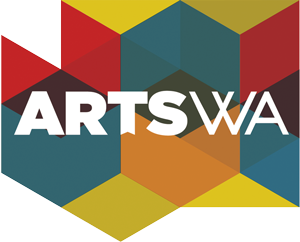
Home » Carve » Experience » Intermediate Experience » Art Business 101: Anatomy of a Show – January/February 1998
VISIBILITY is the big word. !f you want to exhibit and sell your work, you must take whatever steps are necessary to exhibit as often as possible. You will know you have added yet another role to your life when we look at the experiences that happen between the completion of your stone and when a collector buys it. Let’s talk about these “in between” achievements:
GALLERIES AND ALTERNATIVE SPACES
Most artwork is shown and sold through galleries. However, artists also display their work in other exhibitions. You have several choices-art shows held indoors and out, at street fairs and in exhibition halls, in school gyms and shopping malls and then there are “alternative spaces.” Restaurants, banks, post offices and other government agencies and some schools have permitted artists to display their work. The only limitation to the spaces available to artists is their Imagination.
NON-PROFIT ASSOCIATIONS
In another issue, we will discuss dealing with the galleries, i.e., when you have a contract and its terms, the extent of representation, commissions, accounting, changing dealers, but for now, and especially since we are in the midst of one of NWSSA’s most comprehensive shows, let’s discuss what happens in a non-profit exhibition.
Some of the guidelines under which NWSSA operates comes from the State of Washington and federal IRS. The NWSSA Articles of Incorporation state: “The corporation is organized exclusively for educational purposes … of promoting the appreciation and creation of stone sculpture.” And the non-profit status letter from the IRS to Northwest Stone Scn1ptors Association in May, 1995 includes: “This exemption 501(c) is conditioned on the filet that there will be no sales at any of your shows of artwork, except donated works.”
Therefore, for NWSSA shows, the continuing aim will be the listing of the artist’s name for direct contact by interested parties concerning sales-and our emphasis on education about stone carving to the public. Some NWSSA shows are open to all artists, and others involve a jury process for selection of work to be shown.
Non-profit associations and co-ops seldom lead to multiple actual sales, but they are places where artwork may be seen, written about and discussed. And that’s where the benefit comes in!
JURIED SHOWS AND COMPETITlONS
These will give you a reason to meet deadlines and enter shows with different themes. Experiment with quality, style and technique. Worle on what you feel like doing and do it the very best you can … and when you have an exceptional piece, submit your work.
To find out about shows, numerous local and regional publications, arts organizations, arts commissions, and Chambers of Commerce can be helpful in providing lists for you.
Find out exactly how many final pieces will be selected in the show. The fewer people chosen, the smaller your chance of being picked and the more likely you’ll lose the entry fee and your time. Figure out for yourself whether it’s going to be worthwhile to enter.
You will submit slides or photos (or, in some cases, the original work) for acceptance into the show. The usual request is for 3-5 slides. An entry fee is normally required to accompany the submittal (see argument below). If your work is accepted, then original work is requested. !f your work is not accepted, the slides mayor may not be returned accompanied by a rejection letter. This can be a difficult experience for an artist!
According to the Seattle Art Museum, when you are submitting entries, the slides and photographs should be labeled with dimensions of the work, the medium, the title (if any), your copyright name/date. Also, note on the slide which way is up (!!). Some artists draw an arrow, some place a red dot in the lower left comer. Whether you use slides or photographs to represent your work, they should be made and presented with care. Include a cover letter that introduces the artist, resume/biographical information and a self-addressed stamped envelope (SASE) with your materials. The more organized and concise the packet is, the better. The show coordinator hates to open envelopes that have your information so scattered it must be reassembled to view.
in 1981 it wrote up ethical guidelines for its membership stipulating that the artist should refuse to participate in events that include such fees. It has pressed agencies of the US government to develop a policy prohibiting them from funding groups that put on juried art shows requiring artists to pay an entry fee.
Once you decide which shows to enter and call, you will receive the prospectuses; some of them list jurors-and some list judges. There is a difference between the two; whether the sponsor is using the correct term or not is another thing! A juror looks at all slides in order to choose exhibitors. He may or may not award prizes. A judge picks award winners out of an already selected show. The judge usually does not see all entries. So far, NWSSA has not given awards, but this would be a very important way for our vendors to make contributions and the artists to receive recognition.
Jurying tends not to be something art experts do for the money; rather, it is often for the exposure to different art than they might otherwise see. The payment ranges from $50 to $1,300 and involves many hours. The following criteria listed in the September issue of the Art Calendar shows what most jurors look for:
THE CASE AGAINST ENTRY FEES
A growing number of artists and associations have been voicing their objections to the entry fees which place the financial burden on the artist. Instead, they are recommending a minimum (to none) entry fee. After a piece is accepted into the show, a surcharge (or mounting fee) is to be paid by the artists exhibiting.
Originally, entry fees were charged to control the number of participants entering and to provide the sponsor/association with up-front money with which to rent a hall, pay some notable art expert to jury the show, and to create prize money. Times have changed George Koch, president of National Artists Equity Association, the membership organization of visual artists based in Washington, DC, states that show sponsors could easily earn this money in ways other than taxing artists. He reports that many show directors solicit contributions from local sponsors, charge admission, create prints of works on display, and often sell a catalogue of works in the show.
Artist Equity has been uneasy about the existence of entry fees since the organization came into being in 1947, and in 1981 it wrote up ethical guidelines for its membership stipulating that the artist should refuse to participate in events that include such fees. It has pressed agencies of the US government to develop a policy prohibiting them from funding groups that put on juried art shows requiring artists to an entry fee.
So far this effort has met with limited success. National Endowment for the Arts has been reluctant to create this as a policy, however, they have generally refused funds for groups charging entry fees. On the state level, Oregon Arts Commission and New York State Council on the Arts also prohibit funds for this very reason. The Boston Visual Artist Union agrees and the Canadian Artists Representation in Ottawa also claims that its membership “does not consider that the payment of entry fees is appropriate to an exhibition of work by professional artists.”
The US Interior Department has an annual juried art competition sponsored by the federal government and over 1,000 artists a year pay a $50 fee to submit drawings for an annual duck stamp commissioned by Fish & Wildlife Service. Artists Equity asks why the government needs to make money from the artists and is attempting to put pressure on the them for this.
“Entry fees are a bit like a lottery,” said Shirley Levy, an official of Artist Equity . “You pay for the privilege of having someone look at your slides, even if they are rejected” Note: NWSSA has stated that it will return entry fees of rejected pieces; however, this is not the normal procedure of most associations.
THE NEED FORA JUROR’S RESPONSE
This subject is being discussed by many art associations:
Some groups are requesting a few sentences, even one sentence, stating the juror’s positive (or negative) reaction to the work followed by the reason it was not considered Even accepted work seldom gets an appraisal or explanation of why it was accepted.
Often the associations state that the numbers of entrants preclude this additional work by the jurors. The 1997 International Colored Pencil Exhibition received more than 900 entries; 121 pieces were selected by the jurors. However, this non-profit association of 2,000 members is also considering this assistance to their artists.
The Thunder & Lightning Art Exhibition sponsored by Salisbury State University included finding a better way to give feedback to the artists as an important part of the show.
This held the judges to a structure that made them responsible for their actions-and the artists, rejected or accepted, knew the score!
THE SETTING OF SHOW STANDARDS
Will the art world ever come up with a set of standards that all can be measured against? There doesn’t seem to be a consensus among the different arts councils, organizations, or even individual galleries of the codes of conduct or other guidelines about what’s fair, equitable and just for all parties involved.
Some of the standards being developed in various groups protect the artist:
And some of the standards protect the sponsors:
A standard generally accepted is that jurors may be given explicit instructions by the show organizer on how to evaluate works. The criteria may include media, sizes, number of pieces for space allowed, and at times, with some galleries, if the piece is “marketable.” (How can that be done?!!)
Without standards in place, an association must be aware of innuendoes that can arise if the atmosphere becomes questionable. The Business of Being an Artist describes resignations from the American Watercolor Society in 1989 “because it was too political…the same people were winning awards, sitting on juries for the society’s annual show and serving as officers in the society.” When this happens, there are choices for the artist: some resign, some rally a group of artists to petition the association to reexamine its approach to jurying, and some direct their attention elsewhere. Between 10,000 and 15,000 juried shows taking place throughout the US-many of which are highly esteemed and attended by affluent collectors. Why focus too exclusively on anyone show-especially if you are depending upon sales for your livelihood. Diversify. Instead of looking to the jurying system with longing and dread, you will be using it to get more exposure and recognition for your work.
Note: a recent show standard established by NWSSA is that one or more individuals who are not participating in the show will be named juror(s) and these nonparticipating juror(s) will be approved by a majority of the Board.
Who benefits in a show? The artist will benefit. And the association and sponsors, too. With more than 10,000 juried arts and crafts shows annually and fellowships offered by municipal, state and federal arts agencies as well as private foundations, you can see the potential waiting for your stone. Some shows have more prestige than others based on the reputation of the juror(s), if prizes are offered, if any sort of catalogue is published and where the exhibit is held. Acceptance in these shows will increase your exposure. And remember, VISIBILITY is the word.
© 1998 Patricia Sekor
Resource list:
The Art Business Encyclopedia, DuBoff, Leonard;
The Business of Being an Artist, Daniel Grant: Arts Administration. Tern Horwitz
the Fine Artist’s Guide to Marketing. Julius Vitali.








We need some kind of descriptive text here.